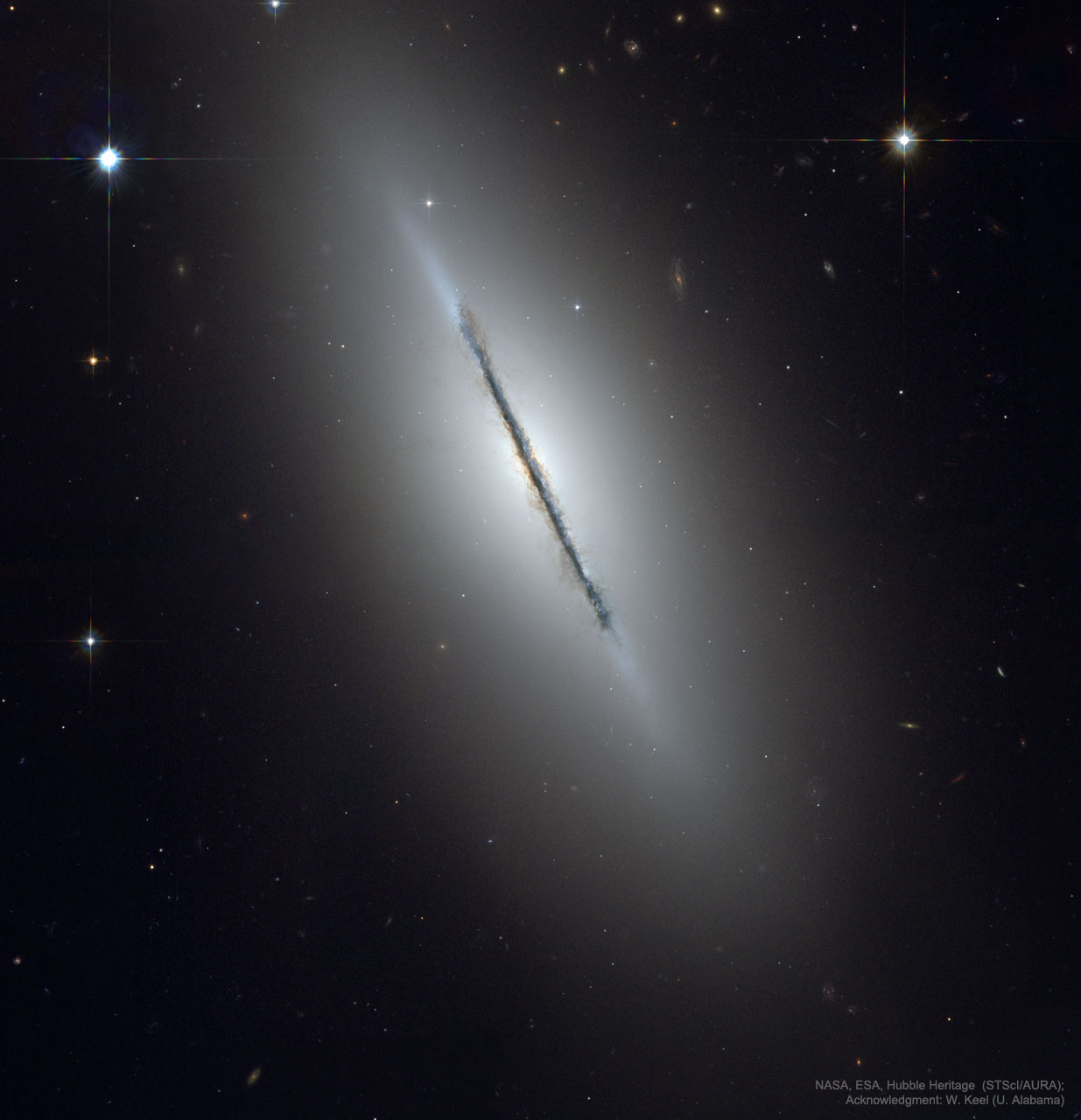侧视星系NGC 5866
2020年11月15日
Edge-On Galaxy NGC 5866
Image Credit: NASA, ESA, and The Hubble Heritage Team (STScI/AURA); Acknowledgment: W. Keel (U. Alabama)
Explanation: Why is this galaxy so thin? Many disk galaxies are just as thin as NGC 5866, pictured here, but are not seen edge-on from our vantage point. One galaxy that is situated edge-on is our own Milky Way Galaxy. Classified as a lenticular galaxy, NGC 5866 has numerous and complex dust lanes appearing dark and red, while many of the bright stars in the disk give it a more blue underlying hue. The blue disk of young stars can be seen extending past the dust in the extremely thin galactic plane, while the bulge in the disk center appears tinged more orange from the older and redder stars that likely exist there. Although similar in mass to our Milky Way Galaxy, light takes about 60,000 years to cross NGC 5866, about 30 percent less than light takes to cross our own Galaxy. In general, many disk galaxies are very thin because the gas that formed them collided with itself as it rotated about the gravitational center. Galaxy NGC 5866 lies about 44 million light years distant toward the constellation of the Dragon (Draco).
Almost Hyperspace: Random APOD Generator
Tomorrow’s picture: grecian skyscape
侧视星系NGC 5866
影像提供: NASA, ESA, and The Hubble Heritage Team (STScI/AURA); 志谢: W. Keel (U. Alabama)
说明: 这个星系为何如此纤细?许多盘状星系其实都和上面影像里的NGC 5866的一样薄,只不过它们并非侧对我们而已。而我们在地球上所见到的侧视星系之中,还包括我们的银河系。分类为透镜状星系的NGC 5866,有难以数计的黝黑和暗红复杂尘埃带 ,而盘面上的众多亮星,则让星系带着偏蓝的底色。由年轻恒星所构成的泛蓝星系盘,延伸的范围超过极细窄星系盘上的尘埃带,而盘中心的星系核心,则可能是受到该处较老较红的恒星之渲染,因而带着橘红的色泽。虽然在质量上,NGC 5866和我们的银河系相近,但光只需要60,000年就能横越它,所需时间要比越过银河系少百分之三十。一般来说,许多星系会很细窄,是因为形成这些星系的气体在盘绕引力中心旋转时会自我挤压。星系NGC 5866位在天龙座方向,离我们约有4千4百万光年远。
几乎超空间: 随机APOD生成器
明日的图片: grecian skyscape

